4109
Views & Citations3109
Likes & Shares
Chemical burns are considered potentially blinding injuries of the eye and constitute a true ocular emergency requiring instant assessment and commencement of treatment. Alkali burns may result in corneal damage via changes in local pH, ulceration, proteolysis and defects in collagen synthesis. The basic substance tends to deposit rapidly within the tissues of the ocular surface resulting in a local saponification reaction. The damaged tissues secrete proteolytic enzymes as part of an inflammatory response which further worsen the damage. Injury to the corneal and conjunctival epithelium from an ocular burn could be severe enough to damage the pluripotent limbal stem cells, causing a limbal stem cell deficiency, as witnessed in this case of a 52 year old male who presented with chief complaint of reduced vision in the left eye following an episode of chemical (lime) injury. Dua et al. proposed a classification scheme for ocular burns based upon clock hour limbal involvement as well as a percentage of bulbar conjunctival involvement. The examination of the patient’s affected eye revealed a leucomatous corneal opacity with total (12 clock hours) limbal involvement, corresponding to Grade 6 of Dua’s classification. There was complete limbal stem cell deficiency with diffuse corneal neovascularization (Figure 1). The following day, he underwent a Simple Limbal Epithelial Transplant (SLET). Firstly, a 4 mm x 2 mm autograft from the contralateral superior limbus was harvested. The autograft was then cut into twelve pieces and stored in normal saline. Thereafter, a 360 degree conjunctival peritomy was made in the injured eye. Dissection of the corneal neovascularization and the anterior superficial layers was performed. The dissected specimen was then sent for histopathological evaluation. Next, the twelve SLET grafts were adhered circumferentially with fibrin glue onto the first layer of amniotic membrane (Figure 3). The patient did remarkably well. The amniotic membrane dissolved, and on post-operative day 11, anterior chamber structures were now visible (Figure 5).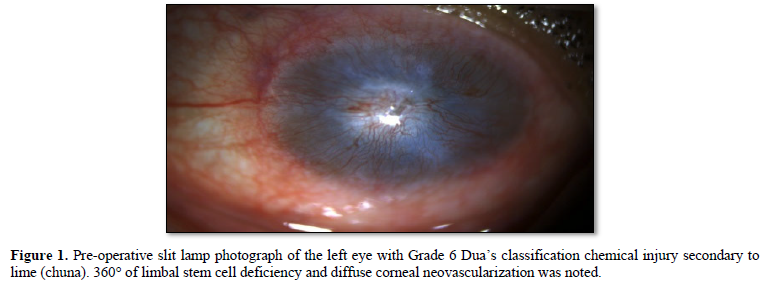
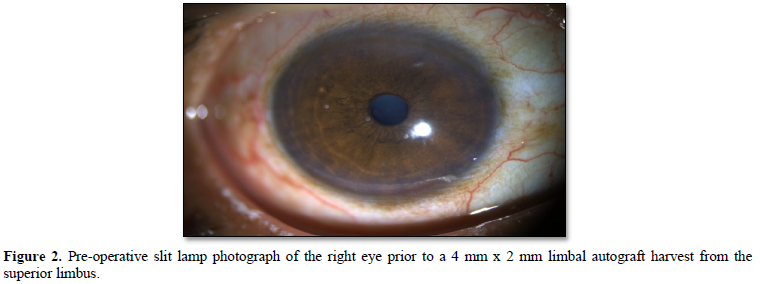
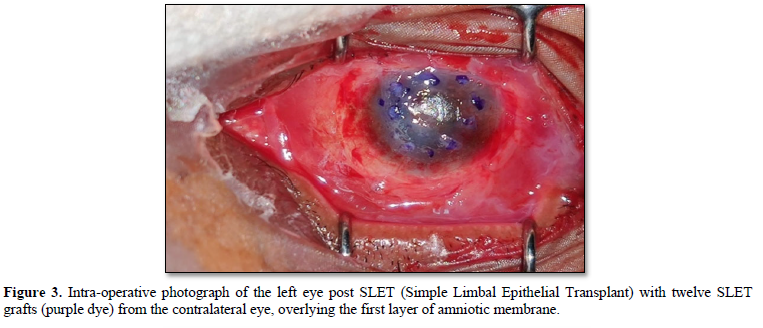
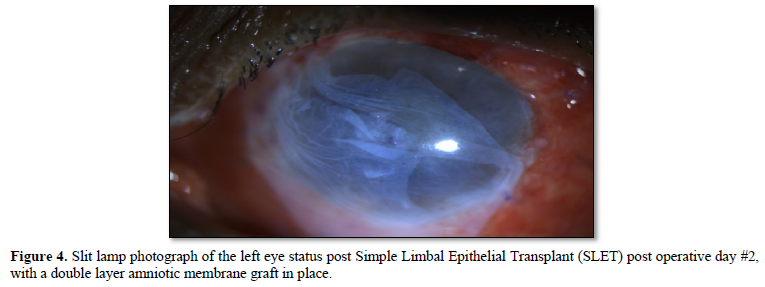
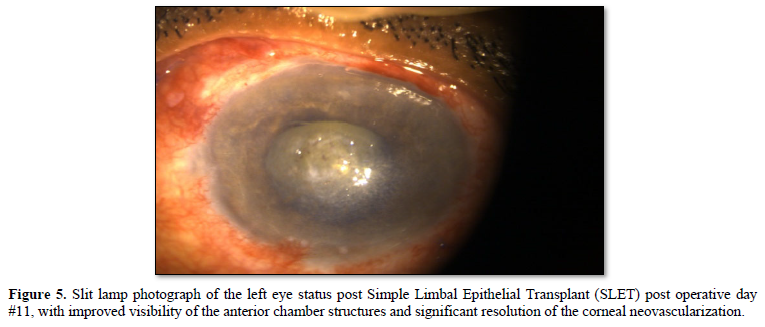
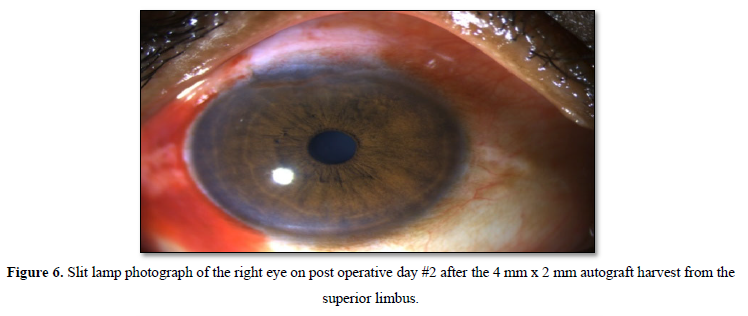
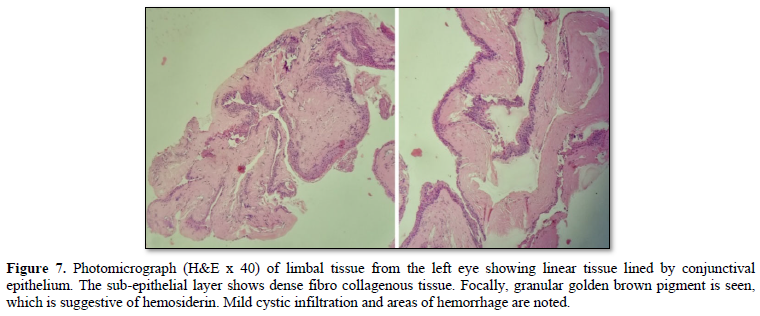


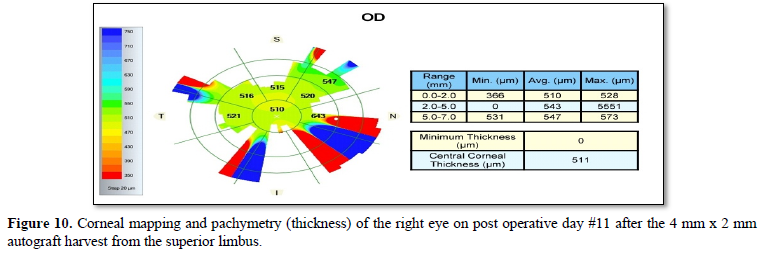
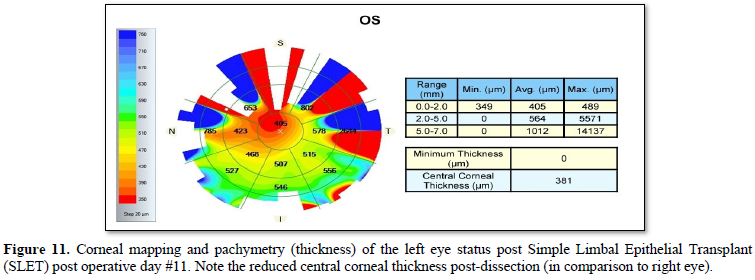
QUICK LINKS
- SUBMIT MANUSCRIPT
- RECOMMEND THE JOURNAL
-
SUBSCRIBE FOR ALERTS
RELATED JOURNALS
- International Journal of Anaesthesia and Research (ISSN:2641-399X)
- Journal of Immunology Research and Therapy (ISSN:2472-727X)
- Journal of Alcoholism Clinical Research
- Journal of Clinical Trials and Research (ISSN:2637-7373)
- International Journal of AIDS (ISSN: 2644-3023)
- Oncology Clinics and Research (ISSN: 2643-055X)
- Journal of Cardiology and Diagnostics Research (ISSN:2639-4634)













